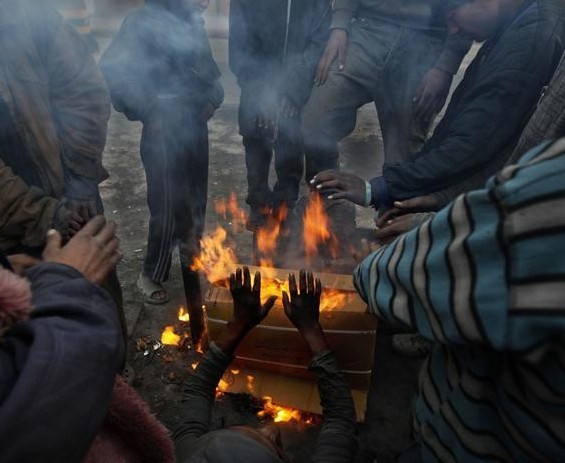Severe cold forecast for Terai in over a week

By Purushottam P. Khatri
Kathmandu, Dec. 5: Meteorologists have predicted severe cold with a chance of cold wave in the Terai plains from mid-December to mid-January.
“Although it is always difficult to predict the exact occurrence of cold wave in the Terai’s flat lands, it usually occurs from mid-December to mid-January,” retired senior meteorologist Rajendra Shrestha said.
Enveloped in mist and dust particles, the lingering layers of cold wave result in the marked cooling of air, he said.
For the past few years, cold wave has become one of the major threats to life in 23 districts of the Terai belt.
According to Nepal Disaster Report 2019 published by the Home Ministry in June this year, cold wave alone took the lives of 48 people in two years--2017 and 2018.
Most of the human casualties were reported from the Terai districts.
According to Shrestha, the impact of cold wave in Nepal was first noticed in 1990. In those days, cold wave used to linger for only a few days and sometimes just for hours but after 1997, its impact has been severer.
Cold wave is actually referred as a stagnant blanket of thick smog, a mixture of smoke and fog
that covers the plains of Nepal, Bangladesh and North India.
Talking to The Rising Nepal, Ngamindra Dahal, a climate change expert, said cold wave is not a natural phenomenon, but the result of human activities. “Although pollution created by human beings has always triggered cold waves, irrigation in the Terai is equally responsible for the problem,” said Dahal.
“If you ask me the reason, I would suggest you to ponder on the swathes of irrigated land that extends across the Terai belt. The land remains wet even in winter. It ultimately causes the smog to stay for a long time,” he explained.
The smog hovers some 300-400 metres above the ground, especially in the morning resulting in low visibility and instant drop in temperatures. Many have died from hypothermia because the mercury level during the cold wave descended 10 to 15 Celsius below the normal temperature.
Meanwhile, National Emergency Operation Centre official under the Ministry of Home Affairs said that the government had already started to reach out to various regional offices and stakeholders to consult the ways of mitigating the impact of winter and cold waves.´
“Locals of the Terai districts have always become the victims of cold wave. This year, we have begun communicating with the regional offices and educating people the most general ways of surviving during winter in advance,” Indu Ghimire, joint-secretary and disaster focal person at the Ministry of Home Affairs, said.
Meanwhile, Meteorological Forecasting Division under the Department Meteorology and Hydrology issuing a three-day Terai fog/cold wave bulletin on Wednesday morning stated that there was no immediate chance of cold wave in Terai region for next one week.
Weather in Dhangadhi, Nepalgunj, Bhairahawa, Simara, Janakpur, and Biratnagar region was blanketed with fog and mist.
Mercury and visibility in Dhangadhi, Nepalgunj, Bhairahawa and Simara, were decreasing every day. The morning temperature of Dhangadhi is at 10.4 Celsius with just 2,000 metres visibility. Bhairahawa has just 500 metres of visibility with 12 degree Celsius minimum temperature.
Recent News

Do not make expressions casting dout on election: EC
14 Apr, 2022
CM Bhatta says may New Year 2079 BS inspire positive thinking
14 Apr, 2022
Three new cases, 44 recoveries in 24 hours
14 Apr, 2022
689 climbers of 84 teams so far acquire permits for climbing various peaks this spring season
14 Apr, 2022
How the rising cost of living crisis is impacting Nepal
14 Apr, 2022
US military confirms an interstellar meteor collided with Earth
14 Apr, 2022
Valneva Covid vaccine approved for use in UK
14 Apr, 2022
Chair Prachanda highlights need of unity among Maoist, Communist forces
14 Apr, 2022
Ranbir Kapoor and Alia Bhatt: Bollywood toasts star couple on wedding
14 Apr, 2022
President Bhandari confers decorations (Photo Feature)
14 Apr, 2022











